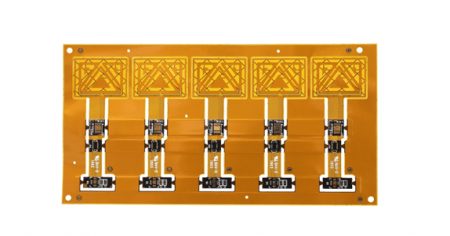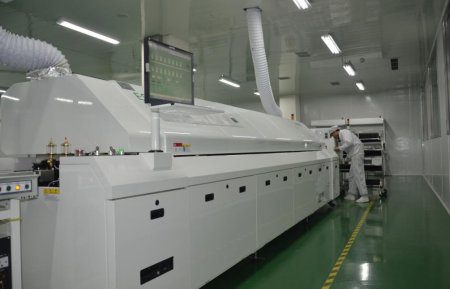- +86-755-23012705
- Building 3, Jinfeng Industrial Park, Fuyong Street, Baoan District, Shenzhen ,China
- [email protected]
Menu
In a mass-produced factory, there is no way for you to use a meter to slowly measure whether every resistor, capacitor, inductance, and even IC circuit on each board is correct, so there is the emergence of the so-called ICT (In-Circuit-Test) automated testing machine. It uses multiple probes (commonly referred to as “bed-of-nails”) to simultaneously access all the parts on the board that need to be measured.
Then, the characteristics of these electronic parts are measured sequentially by program-controlled sequence-based and supplemented by columns. Usually it only takes about 1~2 minutes to complete the test of all parts of the circuit board, depending on the number of parts on the circuit board, the more parts, the longer the time.
However, if these probes are directly in contact with the electronic parts on the board or their solder legs, it is likely to crush some electronic parts, which is counterproductive, so clever engineers invented “test points”, which lead to a pair of small circular dots at both ends of the part, without a solder mask on them, so that the test probe can contact these small dots, without directly touching the electronic parts being measured.

4 layer Flex Circuit with HDI
In the early days of the flex circuit was still the traditional plug-in (DIP), the solder legs of the parts were indeed used as test points. Because the solder legs of traditional parts were strong enough and not afraid of pinpricks, but there were often misjudgments of poor probe contact.
Because after the general electronic parts were soldered or SMT tin eating, a residual film of solder paste flux was usually formed on the surface of the solder and the impedance of this film was very high. It often causes poor contact of the probe. At that time, it was common to see the test operators of the production line, often blowing desperately with air spray guns, or wiping these places that need to be tested with alcohol.
In fact, wave soldered test points will also have the problem of poor probe contact. Later, after the prevalence of SMT, the situation of test misjudgment has been greatly improved, and the application of test points has also been greatly entrusted, because SMT parts are usually very fragile and cannot withstand the direct contact pressure of the test probe, and the use of test points can not directly let the probe contact the parts and their welding legs, which not only protects the parts from injury, but also indirectly greatly improves the reliability of the test, because the misjudgment becomes less.

Flex circuit board in reflow oven
However, with the evolution of science and technology, the size of the circuit board is getting smaller and smaller, and it is already a little difficult to squeeze out so many electronic parts on the small flexible circuit board, so the problem of the test point occupying the space of the circuit board is often a tug-of-war between the design end and the manufacturing end, but this topic will be discussed again when there is an opportunity to talk about it later.
The appearance of the test point is usually round, because the probe is also round, which is easier to produce, and it is easier to bring adjacent probes closer together to increase the density of needles in the bed.
There are some inherent limitations on the use of a bed of needle for circuit testing, such as: the minimum diameter of the probe has a certain limit, and the needle with too small diameter is easy to break and break.
There is also a certain limit on the distance between the pins, because each pin has to come out of a hole, and the back end of each pin has to weld a flat cable, if the adjacent hole is too small, in addition to the problem of contact short circuit between the pins, the interference of the flat cable is also a big problem.

Why does a flex circuit have test points?
Some tall parts cannot be planted next to the needle. If the probe is too close to the tall part, there is a risk of collision with the tall part and damage caused by the high part, and because the part is tall, it is usually necessary to make a hole in the test fixture needle bed to avoid it, which also indirectly causes the needle cannot be implanted. The flex board is becoming more and more difficult to accommodate all the test points under the parts.
As flex circuit boards are getting smaller and smaller, the number of test points has been repeatedly discussed, and now there are some ways to reduce test points, such as Net test, Test Jet, Boundary Scan, JTAG, etc., and there are other test methods that want to replace the original bed of pin test, such as AOI and X-Ray, but at present, each test does not seem to be able to replace ICT 100%.
Make Your PCB Dreams a Reality with XPCB Limited
XPCB Limited is your go-to partner for turning your PCB dreams into reality. Our streamlined PCB manufacturing process, combined with quick-turnaround prototyping and turnkey PCBA services, ensures that your projects come to life with ease. Trust in our expertise and dedication to quality as we help you achieve your PCB goals. Join us and experience the difference with XPCB Limited.






XPCB Limited is a premium PCB & PCBA manufacturer based in China.
We specialize in multilayer flexible circuits, rigid-flex PCB, HDI PCB, and Rogers PCB.
Quick-turn PCB prototyping is our specialty. Demanding project is our advantage.
Tel : +86-136-3163-3671
Fax : +86-755-2301 2705
Email : [email protected]
© 2023 - XPCB Limited All Right Reserve
